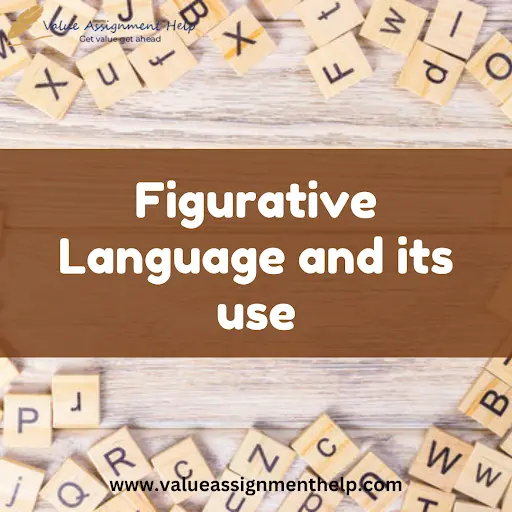
Search Assignments
Our Experts

Search Assignments

Customers Reviews
Was there any time in your life when you have been so hungry that you could "eat a horse"? Complained that "it's raining cats and dogs"? Or wisely observed that "all that glitters is not gold"? Then you have already used figurative language without knowing or noticing.
Figures of speech appear everywhere in literature, poetry books, pop culture, marketing materials, and even our everyday speech. ("Pop up"—that's figurative language!) But what exactly is figurative language? How do you recognize it? What are the most common types?

To attract readers' attention, as well as to make writing more interesting, writers often use their words in such a way that it generates different feelings and thoughts to reveal only the literal meaning of the words. To enhance the meaning of sentences, figurative language involves using literary devices like simile, allegory, irony etc. By using such literary words, writers can become more creative with their words and make their writing more alive.
Let us now take a look at some of the most commonly used figurative language types in the English language:
Simile - This is a literary device often used as figurative language. It involves comparing two different things based on a common characteristic, 'as' and 'like' are connecting words used in third figurative language.
Metaphor - Metaphor is similar to a simile and involves comparing two things. The significant difference between them is in simile comparing two different things and in metaphor comparing two entities by applying the same thing.
Personality - The common feature of figurative language is comparing things, living or non-living. Personalization is the language where writers compare and imply human qualities or characteristics.
Hyperbole is one of the most useful figurative language tools, enabling the writer to highlight a specific point for argument. It means to exaggerate the things involved in it.
Allusion - It is used to refer one thing to another. It is used in fantasy writing. It can be a person, place, event or anything like any writing. In figurative speech, it is used along with other literary devices in fantasy writing.
Symbolism - It is a type of figurative language which enables the writer to represent his thoughts and ideas with the help of visualization. With this symbolism, the 3 enables the author to signify a larger meaning.
Alliteration - Alliteration is a sound device used in figurative language. It entails repeating the consonant sound to emphasise the sentence.
Whether it is the appropriate application of this phenomenon or the avoidance of its use, the usefulness of various strategies is hard to overestimate:
Figurative language makes writing more impactful because it allows the reader to say a lot with fewer words, helping them demonstrate what is implied through context. It takes the writing boring and to the point to multiple dimensions and opens it up for the audience to interpret.
A well-written piece of figurative language can have multiple meanings, all of which can be true. It all depends on the writer's skill and the reader's imagination regarding how they want to interpret the text. Writings are mainly for entertainment, such as movie scripts, children's books, fantasy novels, comics, etc. Often depict the extensive use of figurative language.
Even in day-to-day conversation, the use of figurative language is widespread. You may use figurative language in your interactions with coworkers without knowing it. For example, the phrase, time is money! Or it's raining cats and dogs, which are common figurative language phrases widely used worldwide.
Furthermore, in many places and instances, figurative language phrases are only easily understood by some people simply because of their unfamiliarity. Therefore, it is essential to read a lot and learn a new figure of speech commonly used by the public to communicate better.
Now that we've explored figurative language's definitions and examples let's identify its uses.
We hope you now understand figurative languages and their types. Figurative language is a powerful tool that usually leads readers to see the world differently. With the help of the figurative language types mentioned in this blog post, you can add depth to your writing and express your creativity. ,
If you know figurative language, you can apply it to your content to make it engaging and understand the use and meaning of words when other writers use them in their writing. So, without skipping, learn and understand all the common types of figurative language and use them in the appropriate places.




No Comments